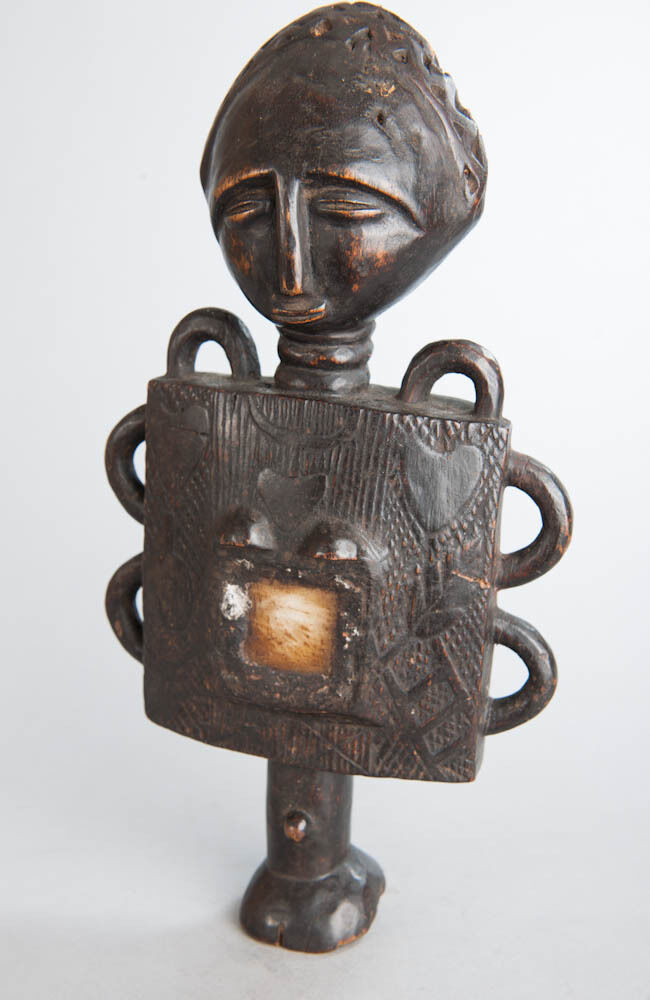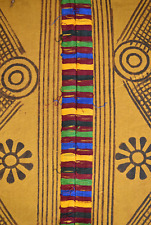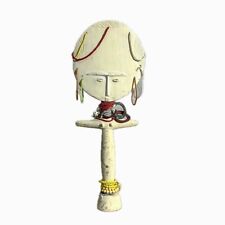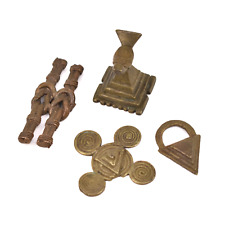Asante Akuba Fertility Doll , Ghana, African Tribal Arts, Figures. For Sale

When you click on links to various merchants on this site and make a purchase, this can result in this site earning a commission. Affiliate programs and affiliations include, but are not limited to, the eBay Partner Network.
Asante Akuba Fertility Doll , Ghana, African Tribal Arts, Figures.:
$167.28
Item: Asante Akuba Doll with covered Bongo cavity. Origin: Ghana.Size:32 x 18 x 6.5 cm.Medium: Carved Wood Context: Akuba Dolls are used in fertility rites by the Ashanti people of Ghana.
Shipping
Forinternational shipping, we offer Registered Airmail (6 to ten days) Fordomestic shipping, we use Ordinary Parcel Post or Express Post both withTracking. Purchases will be shipped no later than one business day followingreceipt of payment. We can provide quotes for insurance, please ask for a quoteat time of purchase. For international customers who want a tracking service,we offer International Express with tracking, please request a quote prior topurchase.
Returns
AfricanOrigins sells tribal objects which have been used, in some cases, for many,many years. We ask that you carefully study the photographs relating to eachobject prior to committing to purchase. In the event that you are unhappy withyour purchase for any reason, we accept refunds within seven days of purchase.We offer a full refund or a credit note valid for twelve months, which ever youprefer. Return postage is paid by the purchaser in all cases.
AboutAfrican Origins
AfricanOrigins has been trading online since 2007. We are constantly on the look outfor interesting objects to add to our collection. Our tribal collection issourced from tribal dealers,sale houses, private collections the world overand also collected in the field.. Where possible, we will specify theprovenance of important individual tribal objects.
response
Thesuccess of African Origins depends on positive response. If you are happy withyour purchase, please leave positive response and we will do the same for you.If you are not happy, please contact us first before leaving negative responseand we will do all within our power to rectify the problem.
The Asante region of southern Ghana is a remnant ofthe Ashanti Empire, which was founded in the early 17th century when, accordingto legend, a golden stool descended from heaven into the lap of the first king,Osei Tutu. The stool is believed to house the spirit of the Ashanti people inthe same way that an individual\'s stool houses his spirit after death.
TheAsante number 1,5 million. The early Asante economy depended on the trade ofgold and enslaved peoples to Mande and Hausa traders, as well as to Europeansalong the coast. In return for acting as the middlemen in the slave trade, theAsante received firearms, which were used to increase their already dominantpower, and various luxury goods that were incorporated into Asante symbols ofstatus and political office. The forest surrounding the Asante served as animportant source of kola nuts, which were sought after for gifts and used as amild stimulant among the Muslim peoples to the north. In traditional Asantesociety, in which inheritance was through the maternal line, a woman\'sessential role was to bear children, preferably girls.
Theart of Ashanti can be classified into two main groups: metalwork (casts ofbrass or gold using a lost-wax method and objects made of hammered metalsheets) and woodcarvings. Fertility and children are the most frequent themesin the wooden sculptures of the Asante. Thus the most numerous works areakua’ba fertility figures and mother-and-child figures called Esi Mansa. Theacua’ba are dolls with disk-shaped heads embodying their concept of beauty andcarried by women who want to become pregnant and to deliver a beautiful child.The fame of these objects derives from a legend asserting that a woman who hasworn one will give birth to a particularly beautiful daughter. A Ghanaiansource indicates another use: when a child disappeared, the acua’ba statue wasplaced with food and silver coins at the edge of the forest to attract themalevolent spirit responsible: the spirit would then exchange the child for thestatue. Sculptured mother-and-child figures show the mother nursing or holdingher breast. Such gestures express Asante ideas about nurturing, the family, andthe continuity of a matrilineage through a daughter or of a state through ason. The mother-and-child figures are kept in royal and commoner shrines wherethey emphasize the importance of the family and lineage. The Asante are famousfor their ceremonial stools carved with an arched sit set over a foot,referring to a proverb or a symbol of wisdom. They are usually made for a chiefwhen he takes office and are adorned with beads or copper nails and sheets. Inrare cases, when the chief is sufficiently important, the stool is placed in aspecial room following his death to commemorate his memory. Ashanti chairs arebased on 17th-century European models and, unlike stools; do not have anyspiritual function. They are used as prestige objects by important chiefsduring festivities or significant gatherings.
Alsoare produced staffs for royal spokesmen, which, like the handles of stateswords, are covered in gold foil. The success of the Ashanti Empire depended onthe trade in gold not only with Europeans at the coast but also with the Muslimnorth. Gold dust was the currency, weighed against small brass weights thatwere often geometric or were representations recalling well-known proverbs.Asante weavers developed a style of weaving of great technical mastery,incorporating imported silk. The Asante developed remarkably diverse kuduocontainers cast of copper alloys. Kuduo were used in many ways. They held golddust and other valuables, but could also be found in important political andritual contexts. Some kuduo were buried with their owners, while others werekept in the palace shrine rooms that housed the ancestral stools of deceasedstate leaders. Life and the afterlife, the present and the past, were enhancedand made more meaningful by the presence of these elegant prestige vessels. TheAsante also cast fine gold jewelry, as do the Baule of Côte d\'Ivoire, who separatedfrom them in the mid-18th century. The deceased are honored by fired-claymemorial heads.

Related Items:
Adinkra Stamped Cloth Asante Ghana Large 132 in x 88 in
$330.00
African Artisan Asante Akua'ba Doll Forms And Fertility In African Art -641
$75.00
Asante Gold Weight Ghana Ericson Collection
$250.00



